Wildlife Photographer of the Year 2019: Check out the winning pics
- Published
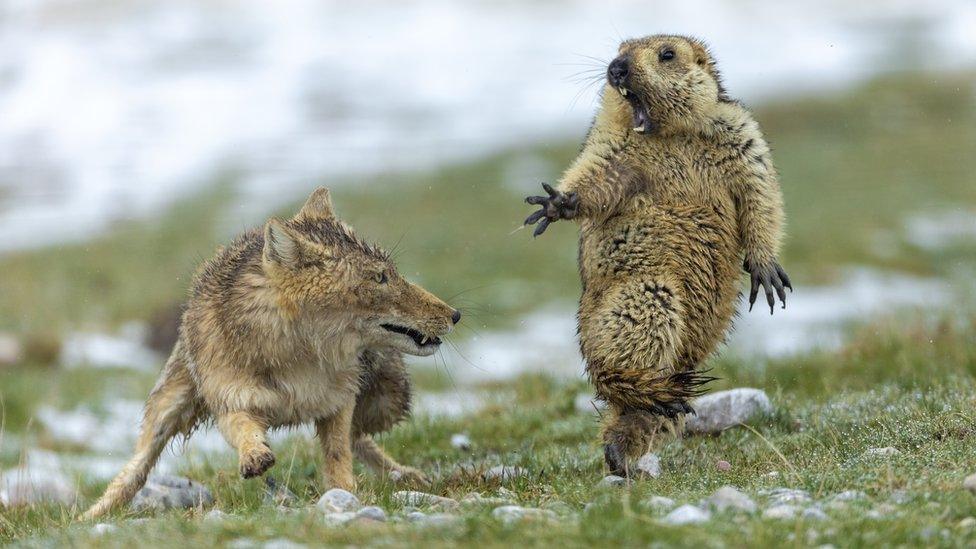
This photo was crowned the Grand Title Winner. It's called The Moment and shows a standoff between a Tibetan fox and a marmot. It was taken by Yongqing Bao who's a wildlife photographer from China. Now that is quite a facial expression!
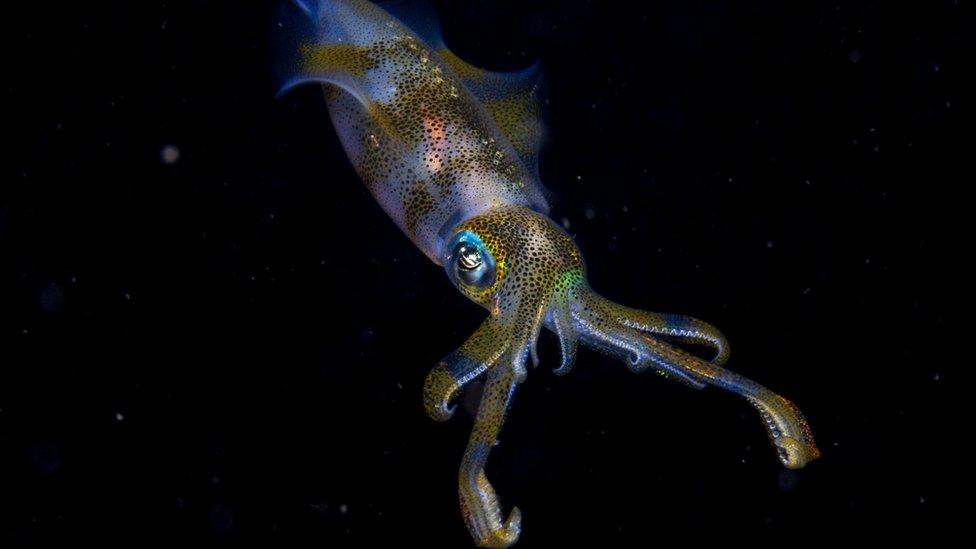
Cruz Erdmann, who's 14, took the Young Wildlife Photographer of the Year Grand Title with this snap of a big fin reef squid. He took it on a night dive in the Lembeh Strait off North Sulawesi in Indonesia. He's loved the ocean since he was little and uses his dad's old underwater camera. One of the judges said: "To dive in the pitch dark, find this beautiful squid and to be able to photograph it so elegantly, to reveal its wonderful shapes and colours, takes so much skill. What a resounding achievement for such a young photographer."
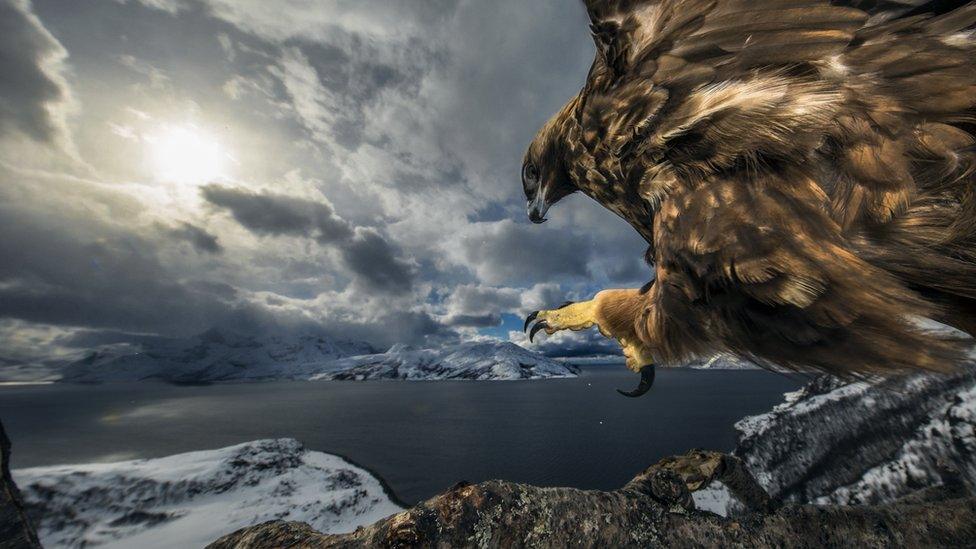
Imagine being able to fly like an eagle! Audun, who took the picture, set it up by climbing high onto a ledge near his home in northern Norway. He put a tree branch there which he hoped would make the perfect golden eagle lookout...and it did! It took over three years for the bird to get used to the camera and start using the branch regularly to survey the coast below. What an amazing snap!
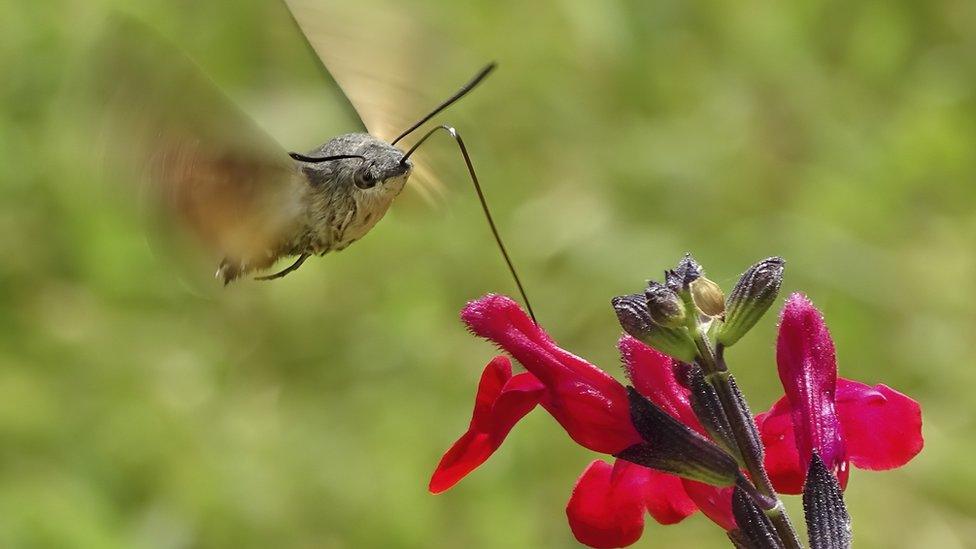
Thomas' photo, Humming Surprise, came first in the 10 and under category. He took the photo while he was on holiday with his family in France. He'd heard a humming sound which turned out to be the fast-beating wings of a hummingbird hawkmoth. It moved so quickly between flowers it was challenge for him to capture it...but he managed it.
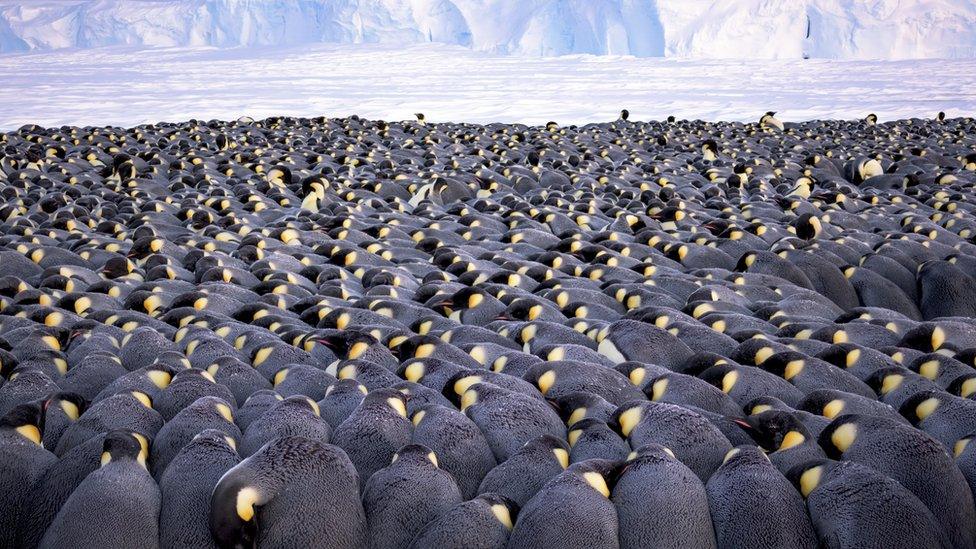
Have you ever seen so many penguins? More than 5,000 male emperor penguins were caught on camera huddling together against the wind and late winter cold on the sea ice of Antarctica’s Atka Bay. It was so cold that the photographer, Stefan, said it ‘felt like needles in my fingertips’ when he took his gloves off to use his camera. Each paired male keeps an egg at his feet tucked under a fold of skin during the harshest winter on Earth. The female penguins trust their mates to look after the eggs.
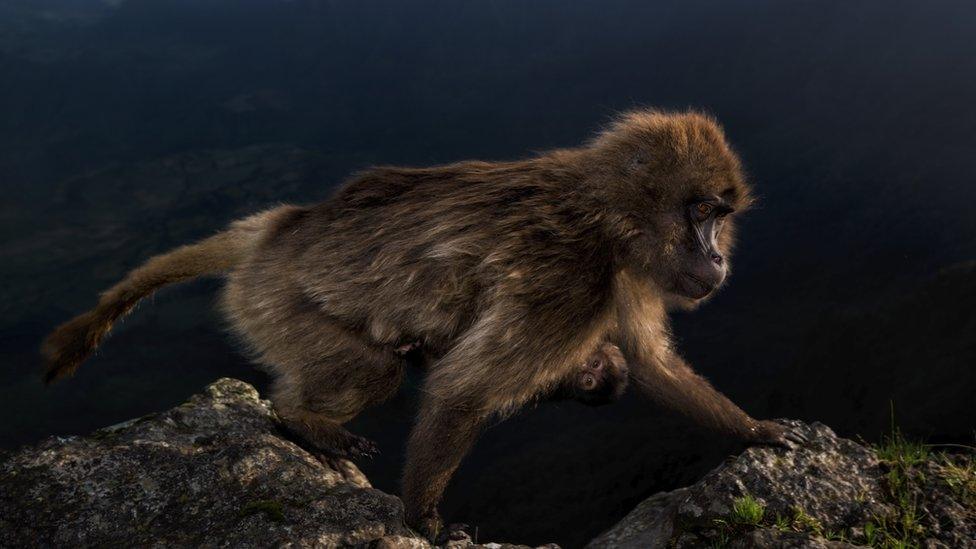
This was the winner in the 15 to 17 year old category. It shows a female gelada (a grass-eating primate) with a week-old infant clinging to her belly on the high plateau in Ethiopia’s Simien Mountains National Park. Can you see the little baby's head poking out?
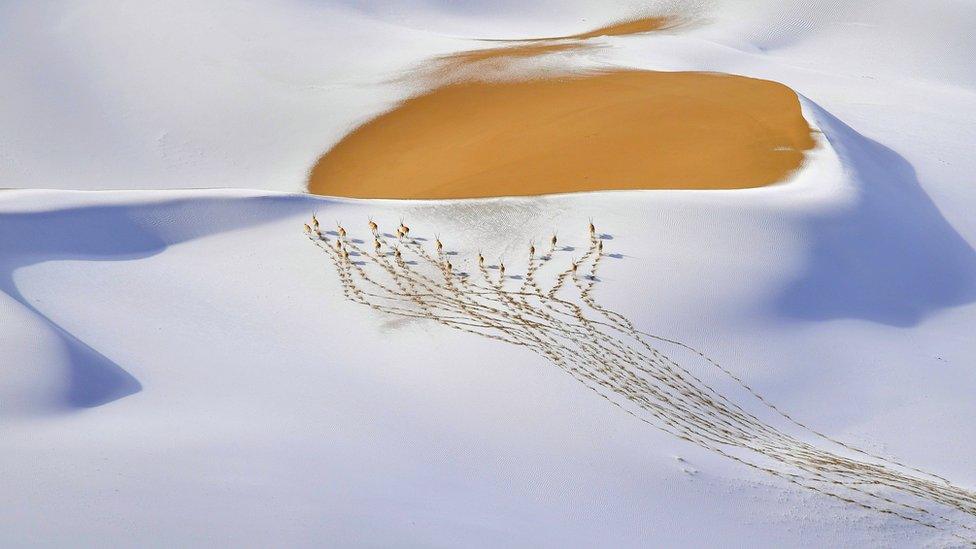
No, this isn't a pile of sugar. It's actually a small herd of male chiru leaving a trail of footprints on a snow-covered slope in the Kumukuli Desert of China’s Altun Shan National Nature Reserve. The antelopes – males with long, slender, black horns – are used to living at high-altitude.
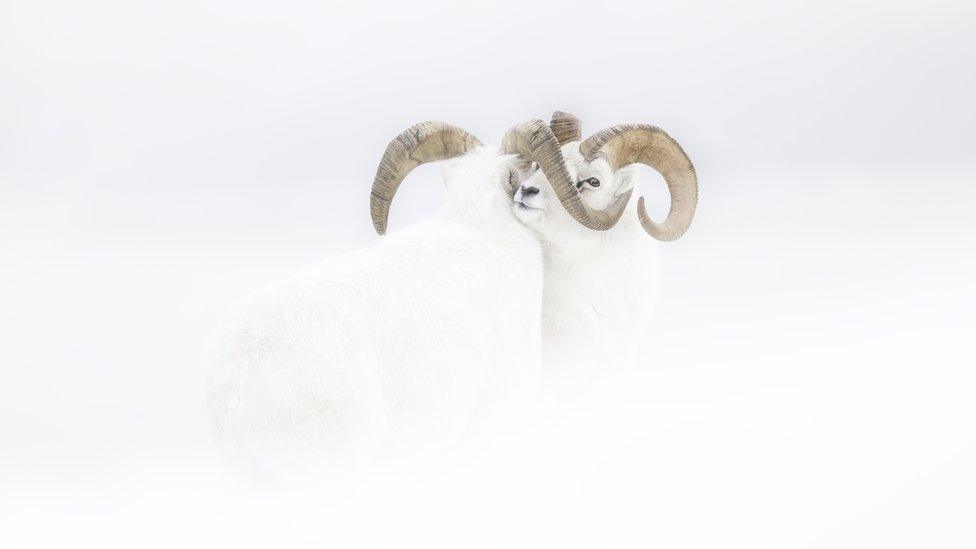
Can you spot the animals in this photo? Frozen Moment by Jérémie Villet, shows two pure-white North American mountain sheep against snow. They have their full winter-white coats and can be seen pushing against each other at the end of a windswept snowy slope. The two rams attempted to duel but because it was so cold (-40 degrees!) and the winds were so strong, they ended up in a truce.
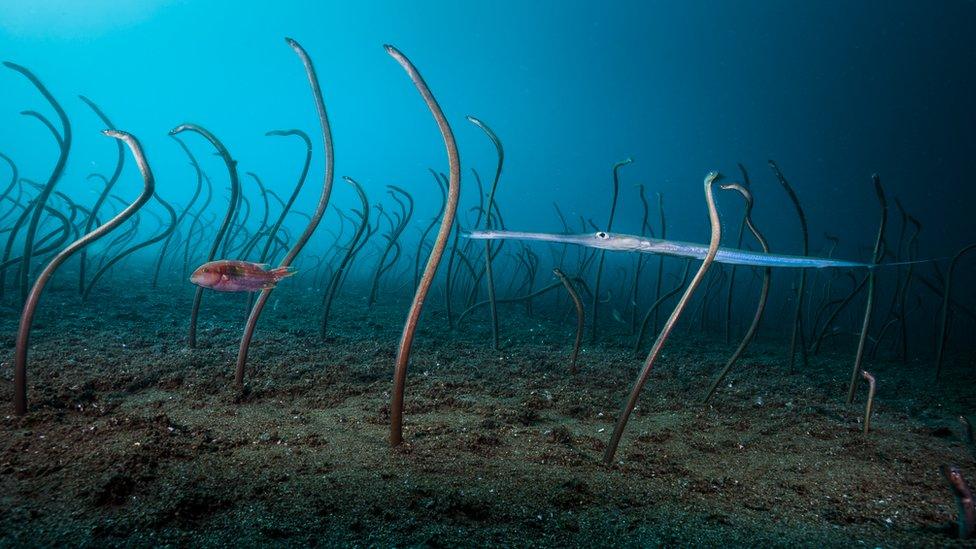
This shows the largest colony of garden eels that the photographer David had ever seen. It was at least two thirds the size of a football field - crikey! It was taken in the Philippines. Garden eels are extremely shy and vanish into their sandy burrows if they sense anything unfamiliar so he was lucky to get a picture of them!
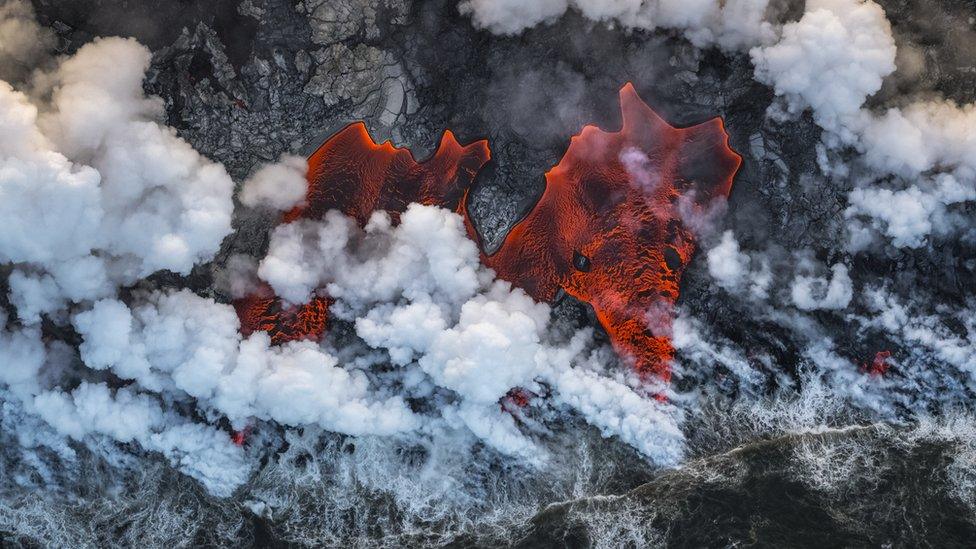
Can you tell what this is? It's red-hot lava flowing down a volcano into the Pacific Ocean. As it meets the water, huge plumes of noxious laze –a mix of acid steam and fine glass particles – are produced. This was the front line of the biggest eruption for 200 years of one of the world’s most active volcanoes, Kîlauea, on Hawaii’s Big Island.
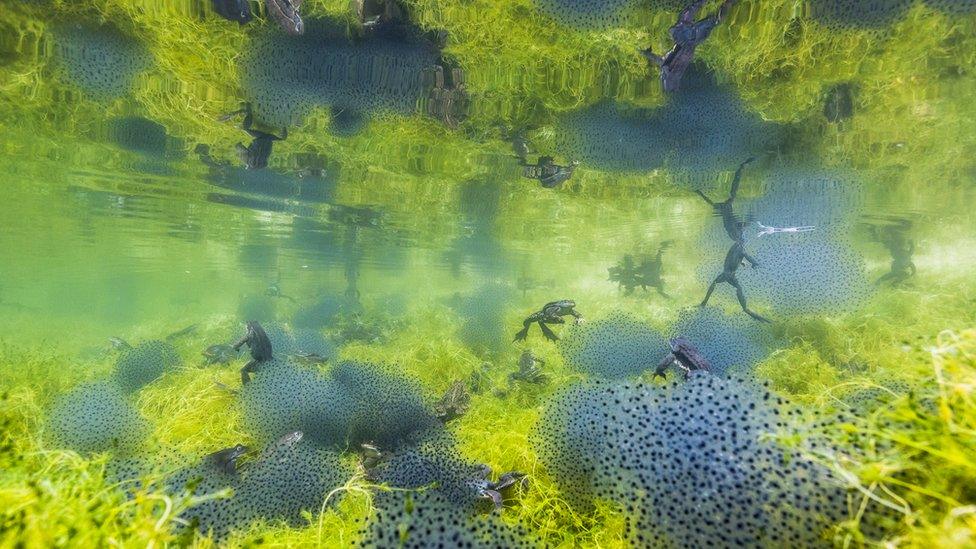
This is what it looks like when lots of frogs all move at the same time - it's the mass migration of common frogs in South Tyrol, Italy. The frogs often spend winter under rocks or buried at the bottom of ponds, but they come out as temperatures start to rise in spring. Although common frogs are widespread across Europe, the number of them is thought to be going down.
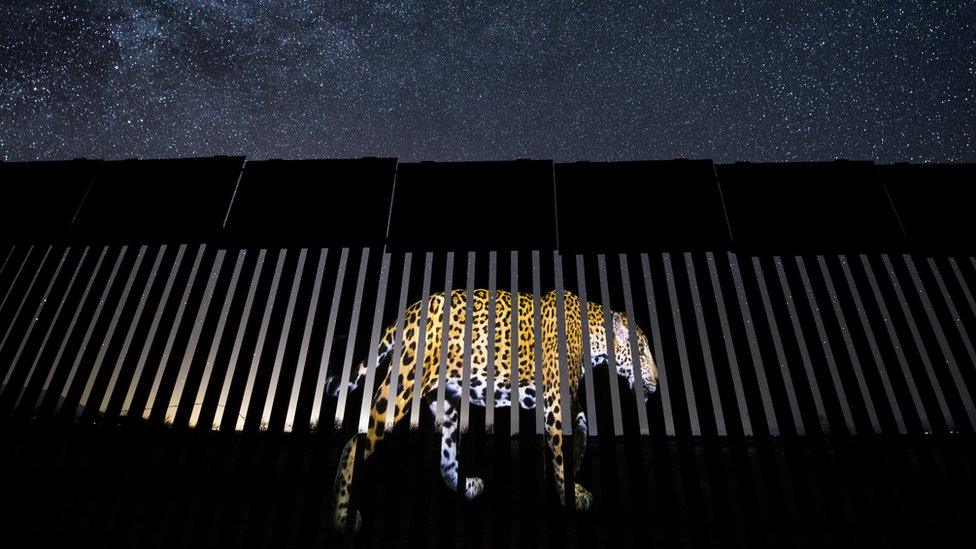
This photo won in the Wildlife Photojournalism category. It captures the image of a jaguar projected on to a section of the US-Mexico border fence, under a star-studded Arizona sky.
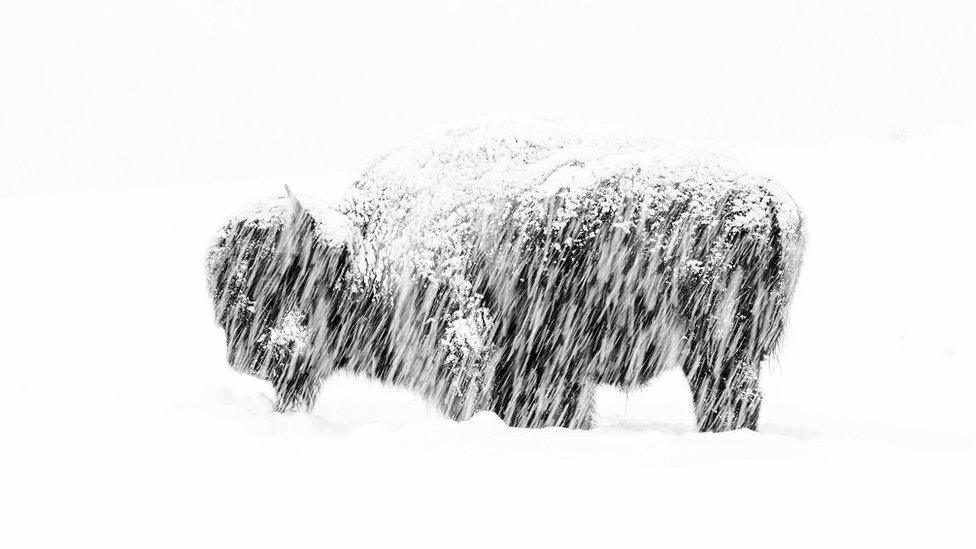
This picture shows a winter whiteout in Yellowstone National Park with an American bison standing in a snow storm. Bison, like this one, survive in Yellowstone’s harsh winter months by feeding on grasses beneath the snow. They use their strong neck muscles to swing their heads from side to side to sweep away the snow!
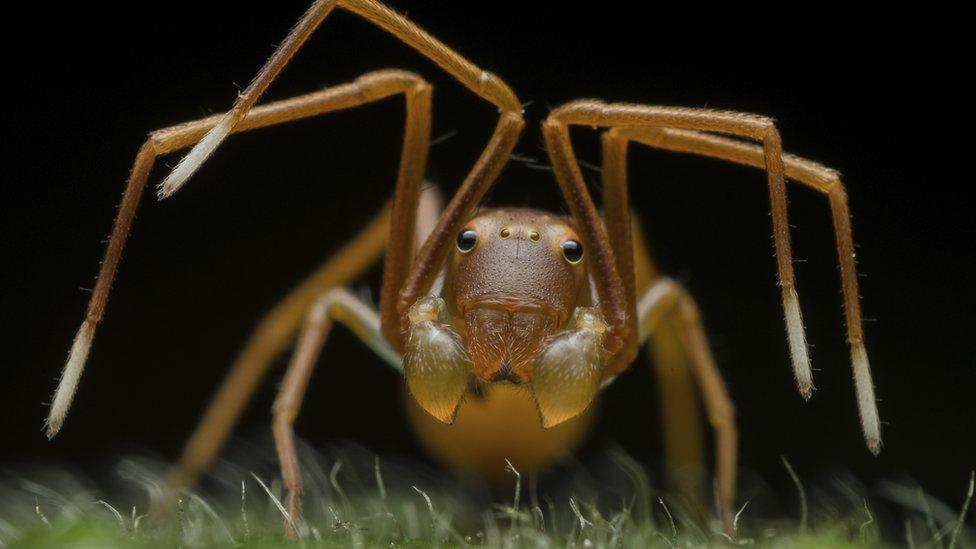
What on earth is this creature? The photographer had been taking photos of a red weaver ant colony when he notice that this one looked a bit different - turns out it's a tiny ant-mimicking crab spider. It's only 5mm long! Many spider species imitate ants in appearance and behaviour –even smell. This can help a spider to blend in if it wants to eat ants or avoid being eaten by them!
- Published3 July 2019
- Published14 May 2019
- Published17 September 2019
- Published13 February 2019
- Published6 February 2019
- Published21 June 2019
